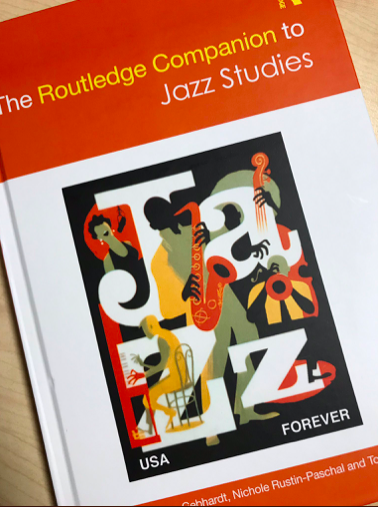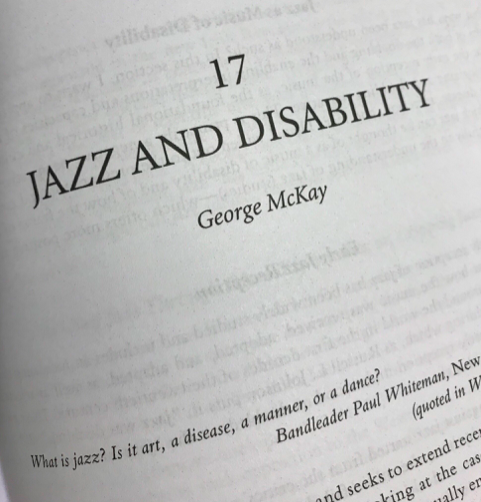
I am pleased to announce that a chapter I wrote on jazz and disability has now been published, in Nick Gebhardt et al’s rich and rewarding new collection, The Routledge Companion to Jazz Studies (2019; London: Routledge; chapter 17; 173-184; 3 b&w images). The chapter is freely downloadable by clicking the link above. It opens with a question from 1920s bandleader Paul Whiteman: ‘What is jazz? Is it art, a disease, a manner, or a dance?’ And it continues:
Art or disease? This chapter both draws on and seeks to extend recent interdisciplinary scholarship in music and disability studies (DS) by looking at the case of jazz. Consider here a definition of the musical instruction alla zoppa, which is usually employed in western classical music to signal a physically impaired character: zoppa in Italian is ‘lame’, ‘limping’, and so it has been applied to music. But it can also mean ‘syncopated’—and so the rhythmic feature at the heart of much jazz has a musical connection with a physical disability, a disability which is about moving differently.
A small body of work has been exploring the relation between jazz and disability; the approach has tended to be around a particular artist (Stras on Connie Boswell, Lubet on Oscar Peterson), or a specific period (Johnson and Stras on early jazz and dance music in the 1920s), or a particular disability (Rowden on visual impairment, Pearl on neurological issues). Some of this work is intersectional, in particular, unsurprisingly for jazz, around disability and race. I want to draw on that as well as extend it in order to make a case for jazz as a music of disability.
The chapter is in two parts, focusing first on discussing aspects of jazz as a music of disability, from its earliest days, even pre-history, in both the United States and Europe, on. I then look a small number of representative and contrasting major jazz figures who were disabled in some way (and there are many others). I have chosen to write about these not just because they are representative and contrasting, but also because of their foundational status in the development of the music, or because their creative practice—which is a facet of their life experience—has something particular to say about negotiating disability in the entertainment world.
One can say, I think, that each of these artists explored what it meant to be (or to become) disabled through their music and performance, whether this exploration of self-hood and expressive representation was an intended or conscious one or not. I seek here to answer a question I raised largely in passing in Shakin’ All Over: Popular Music and Disability: ‘Shall we say … that jazz music is predicated on disability?’

